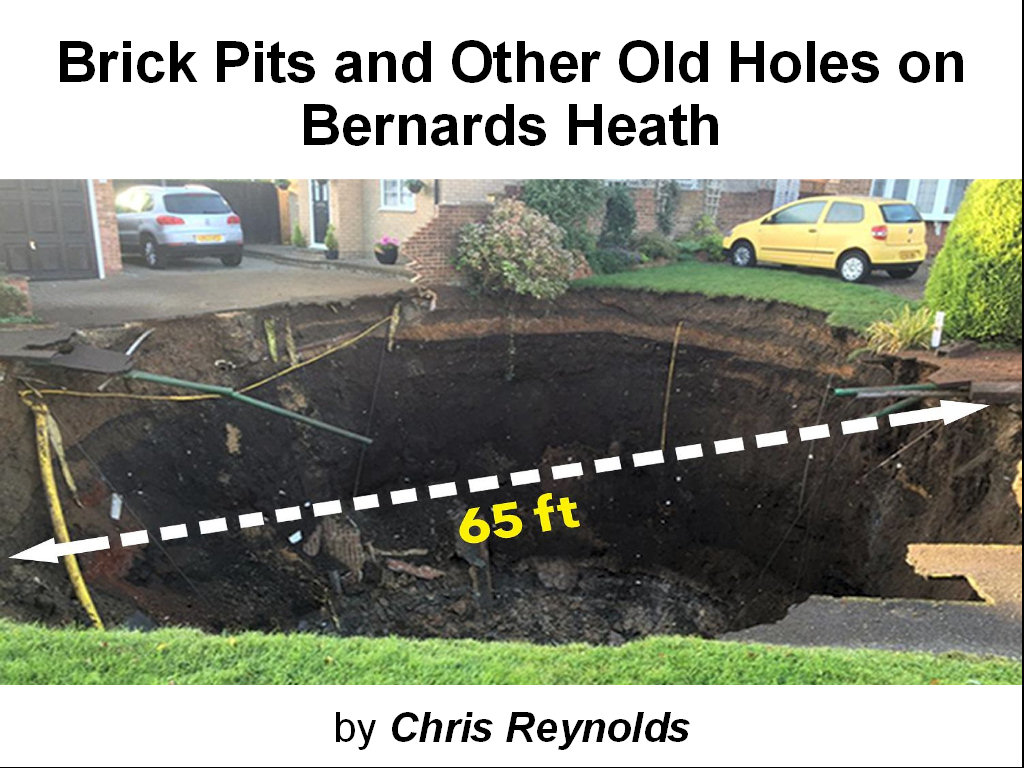|
This picture, and
the events of September 2015 in Fontmell Close, make it
clear why people are asking "What is under the ground on
Bernards Heath, St Albans." I will be looking at why people
dug holes in the
area and what happened to them.
The Biographical note I
provided to the Conference Organisers
Further Family Background
information:
I was born in St
Albans shortly before the war, while my father was
poultry farming at Sandridge on part of Hammonds Farm -
and family connections with the farm go back to
around 1800, if not earlier. However I was brought up in
the West Country and returned to Hertfordshire in 1962.
My great grandfather Jacob Reynolds took over Heath Farm
(from Hammonds) in 1871 and in addition to being a major
milk supplier in St Albans became involved with brick
making, as some of the brick pits were on his former
fields. A member of the family was living in either
Heath Farm (until it was demolished) or in a home built
on the Home meadow into the 21st century. My
grandfather, Harry Reynolds, built Calverton (the house
at the start of Harpenden Road, looking down St Peters
Street) and was a vet who worked with horses. For a time
he also was a job master, which included running the St
Albans waste collection service, and his men were
tipping the rubbish into disused brick pits on Heath
Farm in the early 20th century. For a time Beryl Grove
(Jacob's grand-daughter) lived in a flat in Heath Farm
and did some preliminary research on the farm prior to
its demolition. I talked to her about working together
to write a history of Heath Farm. After her death I
collected a lot of information about the Farm and the
surrounding area, including identifying many of the
brickmakers. Some of the findings have been posted on
this web site.
Additional
Information relating to Bernards Heath & Brickmaking
Bernards Heath
A Short History of Bernards
Heath
The Brickmakers of St Albans
Brick Pits &
other old holes
How Bricks were made by hand.
Poaching and Petty Thieving in St Albans
The Road through
Harpenden |


